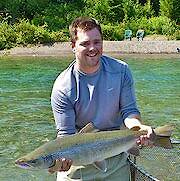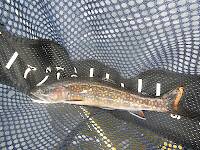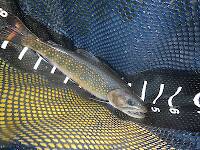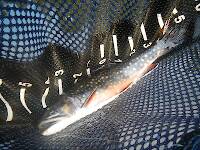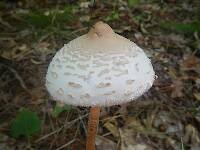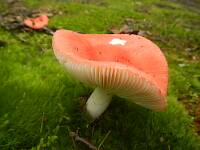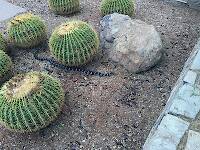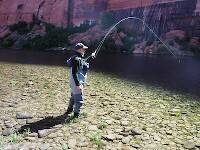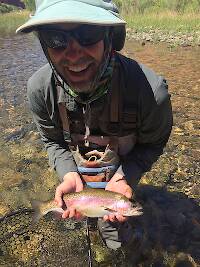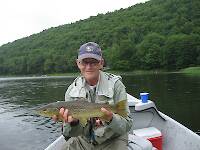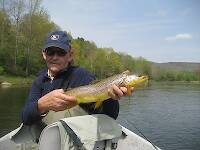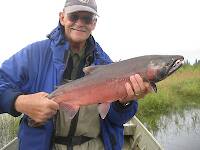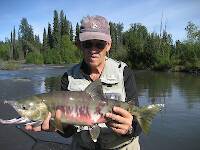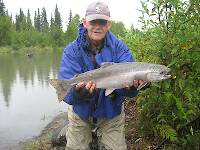
Blue-winged Olives
Baetis
Tiny Baetis mayflies are perhaps the most commonly encountered and imitated by anglers on all American trout streams due to their great abundance, widespread distribution, and trout-friendly emergence habits.
Featured on the forum

This is a striking caddis larva with an interesting color pattern on the head. Here are some characteristics I was able to see under the microscope, but could not easily expose for a picture:
- The prosternal horn is present.
- The mandible is clearly toothed, not formed into a uniform scraper blade.
- The seems to be only 2 major setae on the ventral edge of the hind femur.
- Chloride epithelia seem to be absent from the dorsal side of any abdominal segments.
Based on these characteristics and the ones more easily visible from the pictures, this seems to be Grammotaulius. The key's description of the case is spot-on: "Case cylindrical, made of longitudinally arranged sedge or similar leaves," as is the description of the markings on the head, "Dorsum of head light brownish yellow with numerous discrete, small, dark spots." The spot pattern on the head is a very good match to figure 19.312 of Merritt R.W., Cummins, K.W., and Berg, M.B. (2019). The species ID is based on Grammotaulius betteni being the only species of this genus known in Washington state.
- The prosternal horn is present.
- The mandible is clearly toothed, not formed into a uniform scraper blade.
- The seems to be only 2 major setae on the ventral edge of the hind femur.
- Chloride epithelia seem to be absent from the dorsal side of any abdominal segments.
Based on these characteristics and the ones more easily visible from the pictures, this seems to be Grammotaulius. The key's description of the case is spot-on: "Case cylindrical, made of longitudinally arranged sedge or similar leaves," as is the description of the markings on the head, "Dorsum of head light brownish yellow with numerous discrete, small, dark spots." The spot pattern on the head is a very good match to figure 19.312 of Merritt R.W., Cummins, K.W., and Berg, M.B. (2019). The species ID is based on Grammotaulius betteni being the only species of this genus known in Washington state.

Troutnut is a project started in 2003 by salmonid ecologist Jason "Troutnut" Neuswanger to help anglers and
fly tyers unabashedly embrace the entomological side of the sport. Learn more about Troutnut or
support the project for an enhanced experience here.
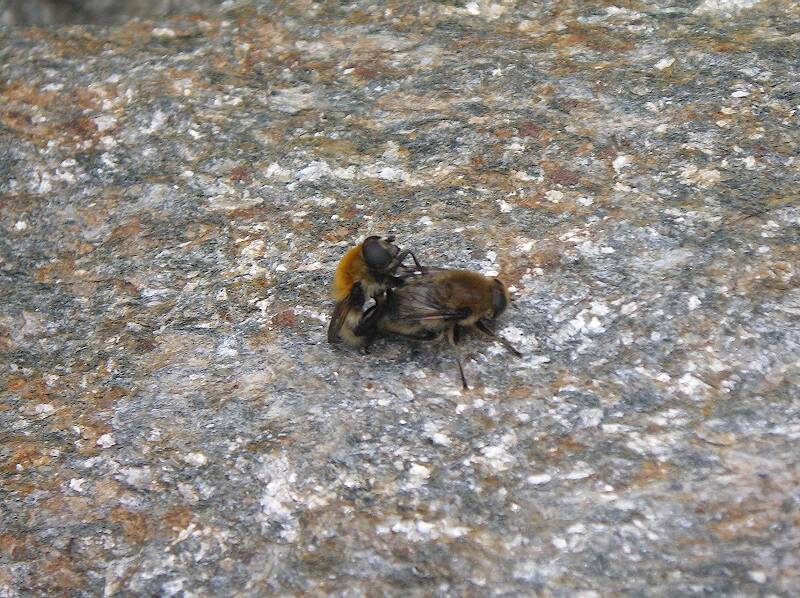
Taxon on Jun 8, 2006June 8th, 2006, 7:12 pm EDT
Willy-
Perhaps they're grooming one another to get some nourishment before returning home. So, what insect order do you think they are? Are they aquatic or terrestrial?
EDIT: 06/09/2006 21:25 PDT
Willy-
Oh well, if you won't talk to me, guess I can always talk to myself.
The insects are:
Order: Hymenoptera (Ants, Bees, Wasps and Sawflies)
Suborder: Apocrita (Ants, Bees and Wasps)
Superfamily: Apoidea (Bees)
Family: Andrenidae (Mining Bees)
Genus: (probably) Andrena
I believe the redhead to be a male, but one would need to count antennal segments to be sure. Males have 13 antennal segments, and females have 12.
Here is the URL for what one looks like closer up: http://static.flickr.com/45/130985530_85274519e7_o.jpg
Hope you will find this information as rewarding as was my pursuit of it.
Perhaps they're grooming one another to get some nourishment before returning home. So, what insect order do you think they are? Are they aquatic or terrestrial?
EDIT: 06/09/2006 21:25 PDT
Willy-
Oh well, if you won't talk to me, guess I can always talk to myself.
The insects are:
Order: Hymenoptera (Ants, Bees, Wasps and Sawflies)
Suborder: Apocrita (Ants, Bees and Wasps)
Superfamily: Apoidea (Bees)
Family: Andrenidae (Mining Bees)
Genus: (probably) Andrena
I believe the redhead to be a male, but one would need to count antennal segments to be sure. Males have 13 antennal segments, and females have 12.
Here is the URL for what one looks like closer up: http://static.flickr.com/45/130985530_85274519e7_o.jpg
Hope you will find this information as rewarding as was my pursuit of it.
Quick Reply
Related Discussions
Topic
Replies
Last Reply
8
Sep 23, 2018
by Jmd123
by Jmd123
Re: How to stop guides from freezing constantly while fishing up north??? Featured Topic
In Fly Tying by HateSnags
In Fly Tying by HateSnags
30
Jan 28, 2016
by Al514
by Al514
30
Mar 14, 2008
by Wbranch
by Wbranch
18
Jul 31, 2011
by Entoman
by Entoman


